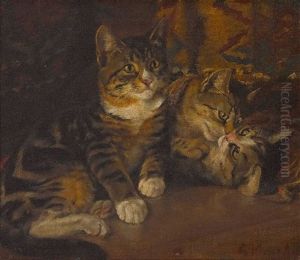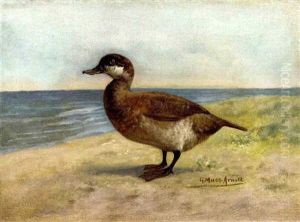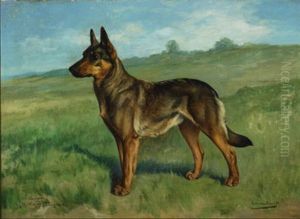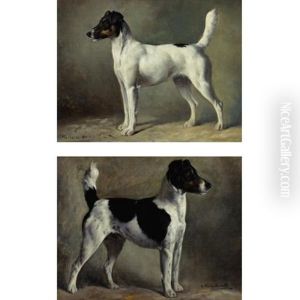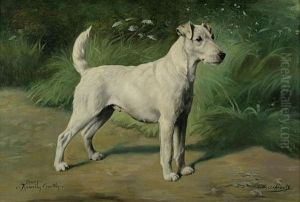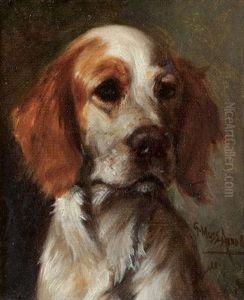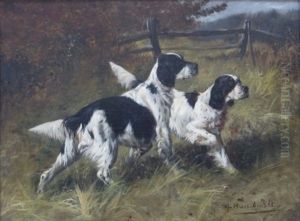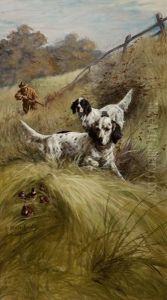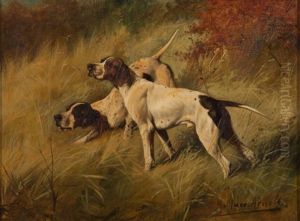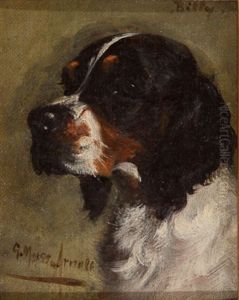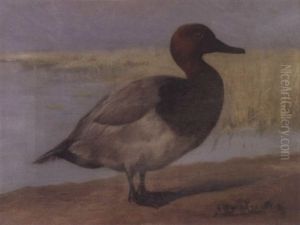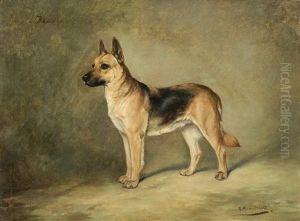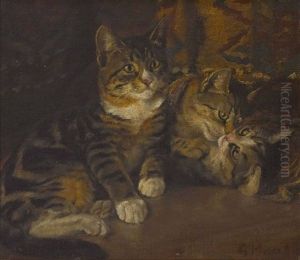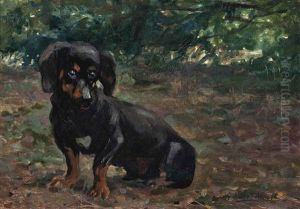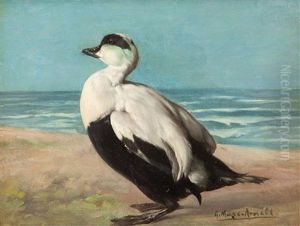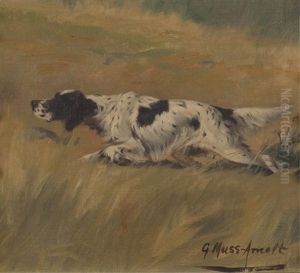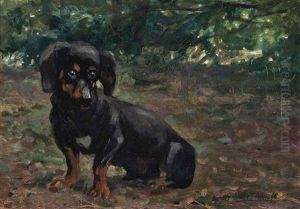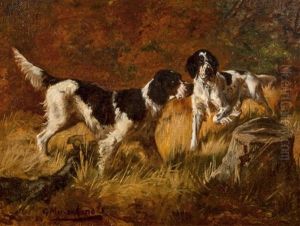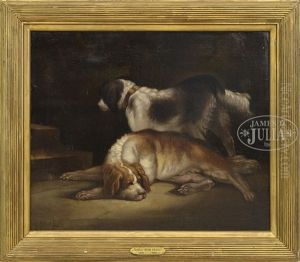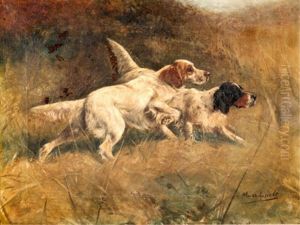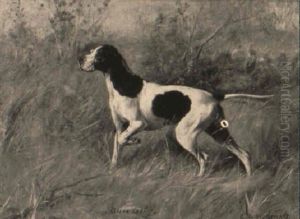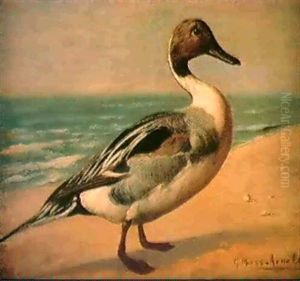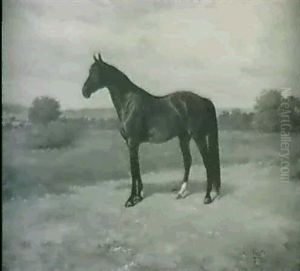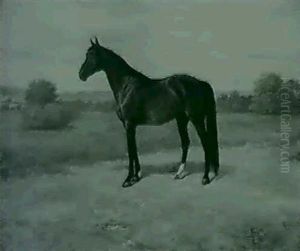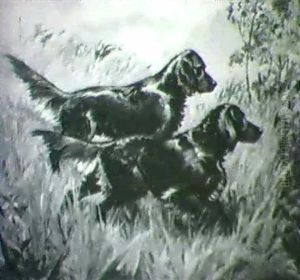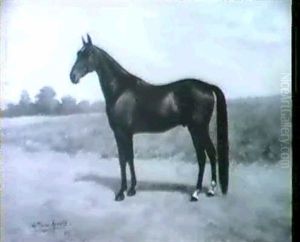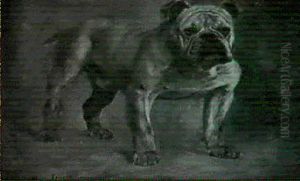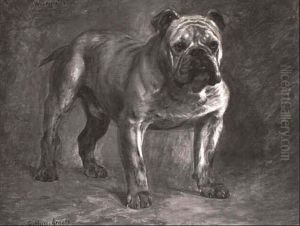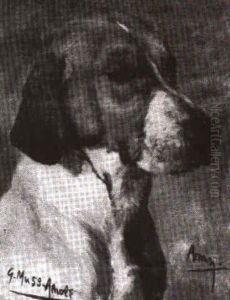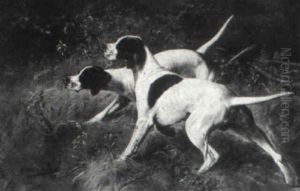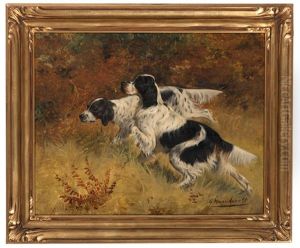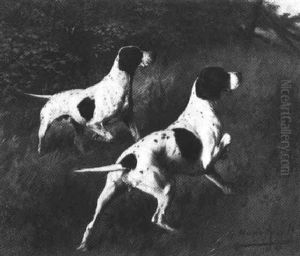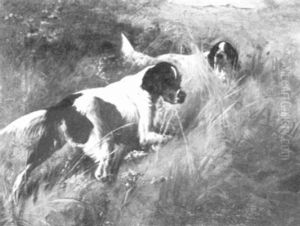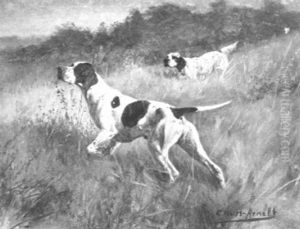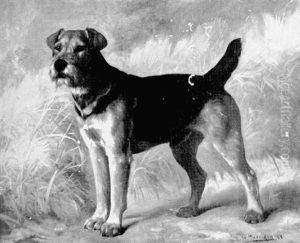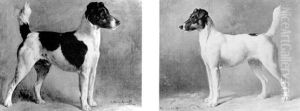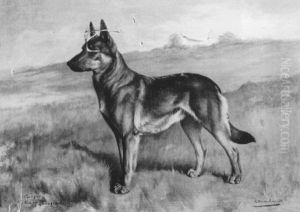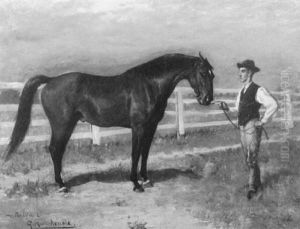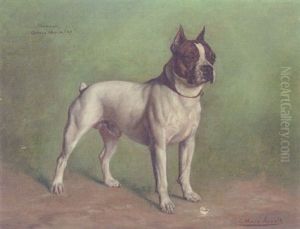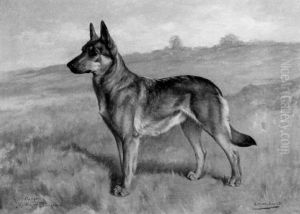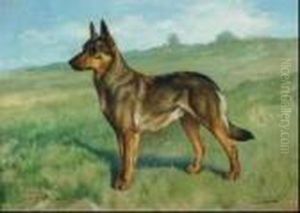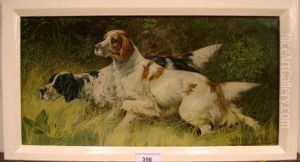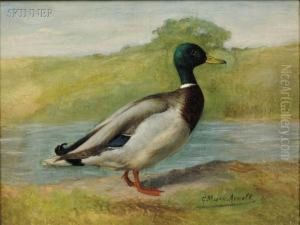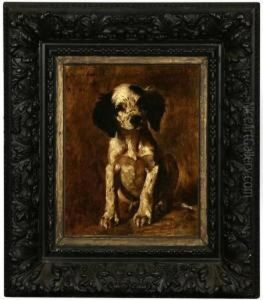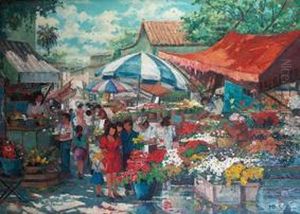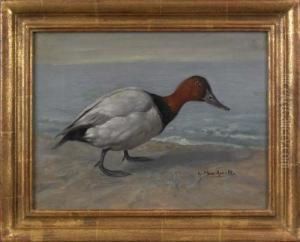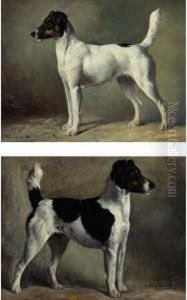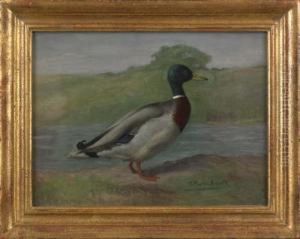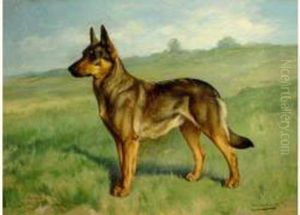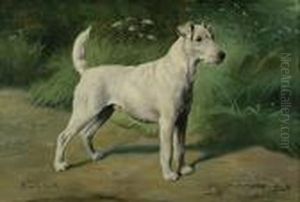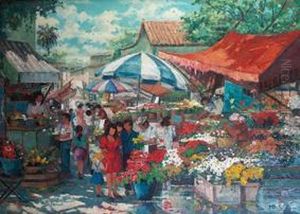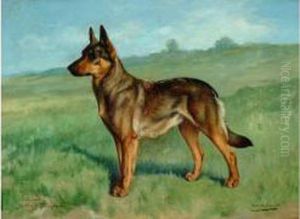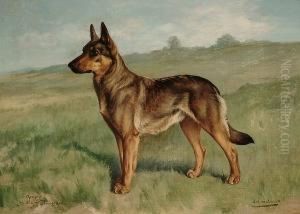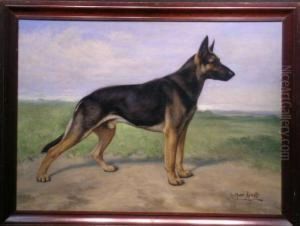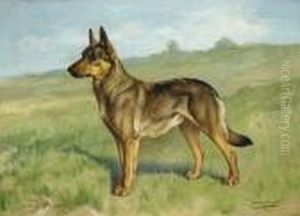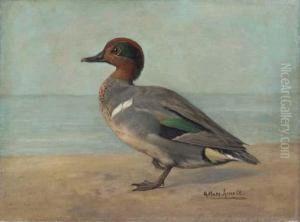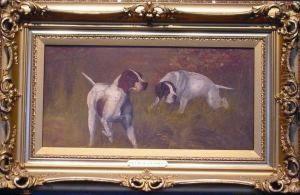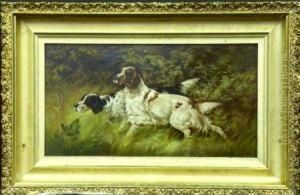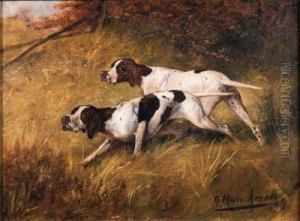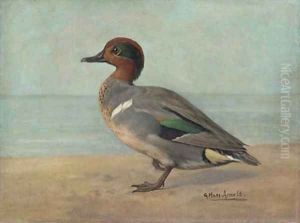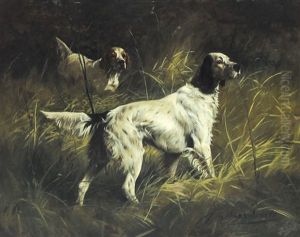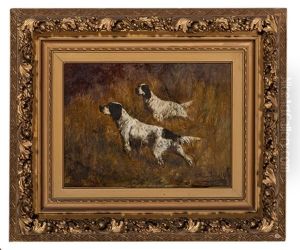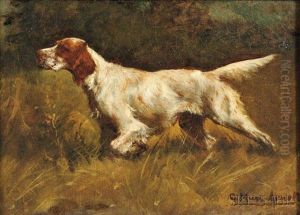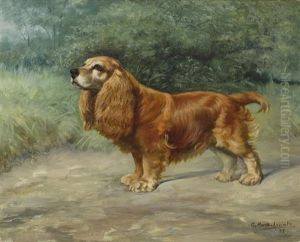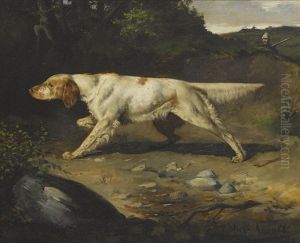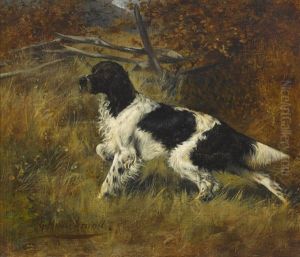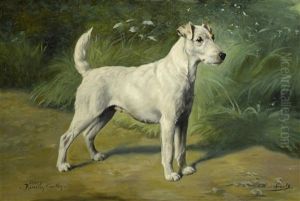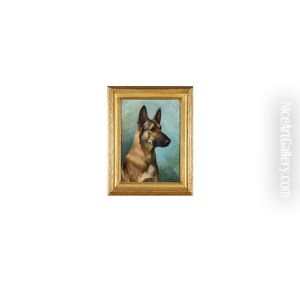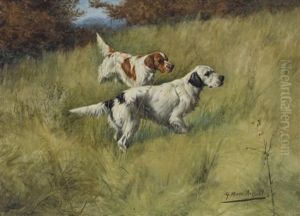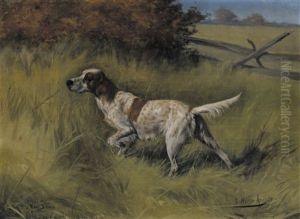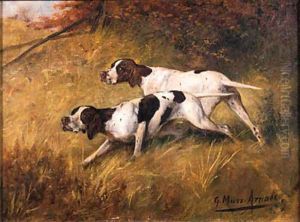Gustav Muss-Arnolt Paintings
Gustav Muss-Arnolt was a German-American artist known primarily for his paintings of animals, particularly dogs. He was born on January 28, 1858, in Halle, Germany. From a young age, Gustav showed a keen interest in animals and art, which would later become the hallmark of his career.
Muss-Arnolt trained at the Royal Academy of Fine Arts in Dresden and later at the Academy of Fine Arts in Munich. His education provided him with a solid foundation in the techniques of painting and an understanding of the academic art traditions of the time.
After completing his studies, he emigrated to the United States in the early 1880s, where he became involved in the thriving art scene of the time. He settled in Chicago, which was a burgeoning center for art and culture, especially after the great Chicago fire when the city was being rebuilt.
In the United States, he made a name for himself as a portrait artist, but his passion for painting animals, and dogs in particular, soon became his primary focus. He was known for his ability to capture the individual personality and character of the animals he painted, which made his work popular among pet owners and breeders. His paintings were not just simple portraits; they often reflected the unique relationship between the animals and their owners.
Muss-Arnolt also became involved in the world of dog shows and was a respected judge. His deep understanding of canine anatomy and breed standards informed his artwork, making his paintings highly sought after by enthusiasts of the dog show circuit.
Throughout his career, he remained an active member of the art community. He exhibited his work at various venues, including the Art Institute of Chicago and the Pennsylvania Academy of the Fine Arts. His paintings were well-received, and he gained a reputation as a talented animalier, a term used for artists specializing in the depiction of animals.
Gustav Muss-Arnolt passed away on October 8, 1927. His legacy endures through his contributions to the art world, particularly in the realm of animal painting. His works continue to be appreciated by art collectors and animal lovers alike, and they stand as a testament to his skill in capturing the essence and spirit of his animal subjects.
